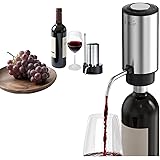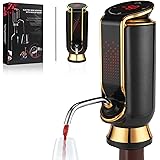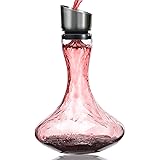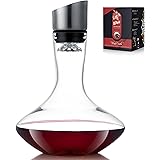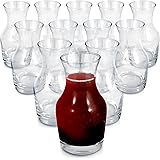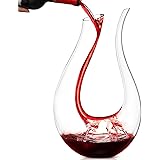Understanding Dry vs. Sweet Wine: A Practical Guide to Tasting
You’ve likely heard wine enthusiasts talk about a wine being “dry” or “sweet,” but what do those terms truly signify, and how can you easily tell the difference? The video above introduces a brilliant, hands-on experiment to demystify this common point of confusion. We’ve all been there, swirling a glass, trying to pinpoint exactly what makes one wine taste markedly different from another.
Fortunately, understanding the distinction between dry vs sweet wine is simpler than you might think. It’s not just about sugar; it’s about balance, acidity, and how your palate perceives these elements. Let’s delve deeper into this fundamental aspect of wine tasting, building on the quick method demonstrated in the video.
The Core Difference: Residual Sugar
At its heart, the primary differentiator between a dry and a sweet wine is residual sugar. During fermentation, yeast converts the natural sugars in grape juice into alcohol. If the fermentation process is stopped early, or if the yeast can’t consume all the sugar, some sugar remains in the wine.
This remaining, unfermented sugar is called “residual sugar” (RS). Wines with very little residual sugar (typically less than 1 gram per liter) are considered dry, as your palate doesn’t detect any sweetness. Wines with more residual sugar, on the other hand, will taste noticeably sweet.
The Acidity Factor: Enhancing or Masking Sweetness
The video astutely points out the effect of acidity, suggesting how a drop of lemon can alter a wine’s flavor profile. Acidity acts as a counterpoint to sweetness, creating balance. Imagine a lemon meringue pie; the tartness of the lemon cuts through the richness of the meringue, preventing it from being overly cloying.
In wine, high acidity can make a sweet wine taste less syrupy and more refreshing, while low acidity can make even a slightly sweet wine feel heavy or unbalanced. It’s this interplay between residual sugar and acidity that largely dictates a wine’s flavor profile and how we perceive its sweetness or dryness.
The Quick Test: A Spoonful of Sugar
The most straightforward way to grasp the concept of dry vs sweet wine, as shown in the video, is a simple home experiment. Grab two glasses of the same dry wine, add a small spoonful of sugar to one, and swirl it until dissolved. Taste the unsweetened wine first, then the sweetened one.
Immediately, you’ll notice the dramatic difference in palate sensation. The wine with added sugar will feel smoother, fruitier, and less bitter, precisely because the sugar masks some of the wine’s inherent dryness and acidity. This hands-on method provides an undeniable benchmark for identifying sweetness.
Beyond Sugar: Other Factors Influencing Perception
While residual sugar is paramount, other elements also play a role in how we perceive a wine’s sweetness or dryness. These include:
-
Fruitiness:
Wines rich in fruit flavors—like ripe berries or tropical notes—can sometimes *seem* sweet even if they are technically dry. Your brain associates these intense fruit aromas with sweetness, which can be a common point of confusion for new wine tasting enthusiasts.
-
Alcohol Level:
Higher alcohol wines can sometimes present a sensation of sweetness, particularly on the finish. Alcohol contributes to the body and richness of a wine, which can mimic a sweet sensation, especially in certain varietals.
-
Tannins:
Tannins, which are compounds found in grape skins, seeds, and oak barrels, contribute to dryness and bitterness, particularly in red wines. A highly tannic wine will often feel “drier” on the palate due to the drying sensation tannins impart, making it distinct from a truly sweet wine.
Common Examples of Dry and Sweet Wines
To further solidify your understanding of dry vs sweet wine, let’s consider some common examples:
-
Typically Dry Wines:
Most red wines, such as Cabernet Sauvignon, Merlot, and Pinot Noir, are fermented until dry, meaning all sugars have been converted. Many white wines like Sauvignon Blanc, Pinot Grigio, and most Chardonnay are also produced in a dry style, offering crisp and refreshing experiences.
-
Typically Sweet Wines:
Dessert wines are the most obvious sweet examples, including Moscato d’Asti, Sauternes, Ice Wine, and Port. Riesling, particularly German Rieslings, can range from bone-dry to lusciously sweet, often clearly labeled with terms like “Kabinett” (often dry to off-dry) or “Beerenauslese” (very sweet).
Developing Your Palate for Sweetness and Dryness
Improving your ability to distinguish dry vs sweet wine comes down to practice and mindful tasting. Always try to isolate sensations on your palate. When you take a sip, notice the initial impression. Does it feel cloying or refreshing? Does your tongue detect a sugary coating, or does it feel clean and dry?
Think about the balance of the wine. If a wine has high fruit flavors but no perceptible sweetness, it’s likely a dry wine with a fruity profile. If it leaves a coating or a lingering sugary taste, it’s definitively sweet. Keep experimenting with different wines, perhaps even conducting the sugar test with various dry wines, to refine your personal sensory benchmarks.


